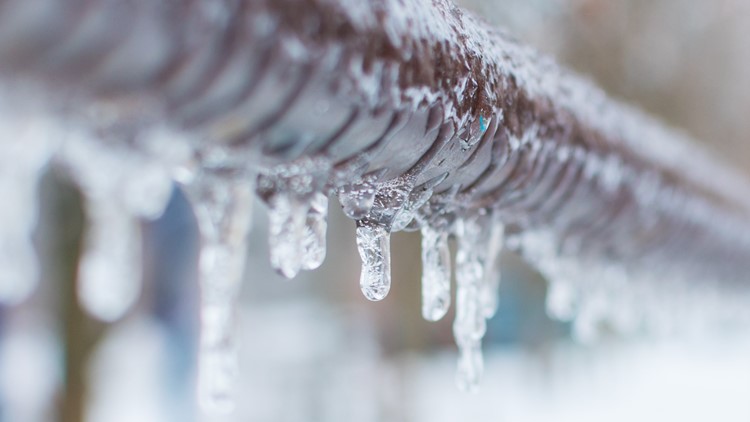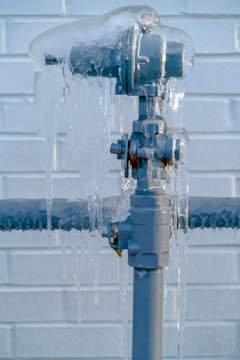This post directly below about How to prepare your home plumbing for winter weather is relatively compelling. You should keep reading.

Winter can wreak havoc on your pipes, especially by freezing pipes. Right here's exactly how to stop it from taking place and what to do if it does.
Intro
As temperatures drop, the threat of icy pipelines boosts, potentially resulting in costly repair work and water damages. Understanding exactly how to prevent frozen pipes is important for homeowners in chilly environments.
Prevention Tips
Insulating vulnerable pipelines
Cover pipes in insulation sleeves or utilize warm tape to protect them from freezing temperatures. Concentrate on pipelines in unheated or outside areas of the home.
Home heating techniques
Maintain interior areas properly warmed, specifically areas with plumbing. Open closet doors to permit warm air to flow around pipes under sinks.
Exactly how to identify icy pipelines
Look for reduced water circulation from taps, unusual smells or noises from pipes, and visible frost on revealed pipes.
Long-Term Solutions
Structural modifications
Take into consideration rerouting pipes far from outside wall surfaces or unheated locations. Include additional insulation to attics, cellars, and crawl spaces.
Upgrading insulation
Invest in premium insulation for pipes, attics, and walls. Correct insulation aids keep regular temperature levels and reduces the danger of icy pipelines.
Shielding Outdoor Pipes
Yard pipes and outside taps
Detach and drain garden pipes prior to wintertime. Set up frost-proof spigots or cover exterior taps with shielded caps.
Comprehending Frozen Pipelines
What causes pipes to freeze?
Pipelines freeze when revealed to temperatures below 32 ° F (0 ° C) for extended durations. As water inside the pipelines freezes, it expands, putting pressure on the pipeline wall surfaces and possibly triggering them to rupture.
Risks and problems
Icy pipelines can result in water disruptions, property damages, and pricey repair services. Ruptured pipelines can flooding homes and trigger extensive structural damage.
Indications of Frozen Pipeline
Determining frozen pipes early can prevent them from rupturing.
What to Do If Your Pipelines Freeze
Immediate activities to take
If you suspect icy pipes, maintain taps available to alleviate pressure as the ice thaws. Use a hairdryer or towels soaked in hot water to thaw pipelines slowly.
Conclusion
Stopping frozen pipes calls for aggressive steps and fast responses. By understanding the reasons, indicators, and safety nets, property owners can secure their pipes during cold weather.
5 Ways to Prevent Frozen Pipes
Drain Outdoor Faucets and Disconnect Hoses
First, close the shut-off valve that controls the flow of water in the pipe to your outdoor faucet. Then, head outside to disconnect and drain your hose and open the outdoor faucet to allow the water to completely drain out of the line. Turn off the faucet when done. Finally, head back to the shut-off valve and drain the remaining water inside the pipe into a bucket or container. Additionally, if you have a home irrigation system, you should consider hiring an expert to clear the system of water each year.
Insulate Pipes
One of the best and most cost-effective methods for preventing frozen water pipes is to wrap your pipes with insulation. This is especially important for areas in your home that aren’t exposed to heat, such as an attic. We suggest using foam sleeves, which can typically be found at your local hardware store.
Keep Heat Running at 65
Your pipes are located inside your walls, and the temperature there is much colder than the rest of the house. To prevent your pipes from freezing, The Insurance Information Institute suggests that you keep your home heated to at least 65 degrees, even when traveling. You may want to invest in smart devices that can keep an eye on the temperature in your home while you’re away.
Leave Water Dripping
Moving water — even a small trickle — can prevent ice from forming inside your pipes. When freezing temps are imminent, start a drip of water from all faucets that serve exposed pipes. Leaving a few faucets running will also help relieve pressure inside the pipes and help prevent a rupture if the water inside freezes.
Open Cupboard Doors
Warm your kitchen and bathroom pipes by opening cupboards and vanities. You should also leave your interior doors ajar to help warm air circulate evenly throughout your home.

As a serious person who reads on How to prepare your home plumbing for winter weather, I assumed sharing that topic was worthwhile. Loved our piece? Please share it. Help someone else discover it. I truly appreciate your readership.
Book Your Appointment
Comments on “Prevent Frozen Plumbing in Cold Weather: Pro Tips”